The MacBook storage issue is always relevant. We generate more and more content on our devices and use apps that are bursting with cache files. This is what creates the cryptic category of Other storage on Mac. So, let’s figure out what Other Storage is and how to remove Other from your Mac.
What is Other on Mac Storage?
Other storage on Mac consists of files that don’t easily fall into the clearer categories like Photos, Audio, Applications, Documents, etc. Mostly, these would be files from the Library folder; those generated by the system and apps are usually within it.
In addition to files from the Library, this category of storage may include some other files. So what are they? The types of “Other” files would include:
| Documents, screensavers, sheets | like PDF, .psd, .doc, .epub, .txt, .xlsx, etc. |
| macOS system and temporary files | browser cookies, system logs, document versions, and application cache |
| Cache files | user cache, browser cache, and system cache |
| Disk images and archives | files like .zip and .dmg |
| App plug-ins and extensions | files that help customize apps and web browsers |
| Old device backups | outdated iOS, iPadOS and macOS backups |
And everything else that doesn’t fit into the main macOS categories.
You can check how much space it takes by following these steps:
- Open the Apple menu (top left corner).
- Now, click About This Mac > Storage.
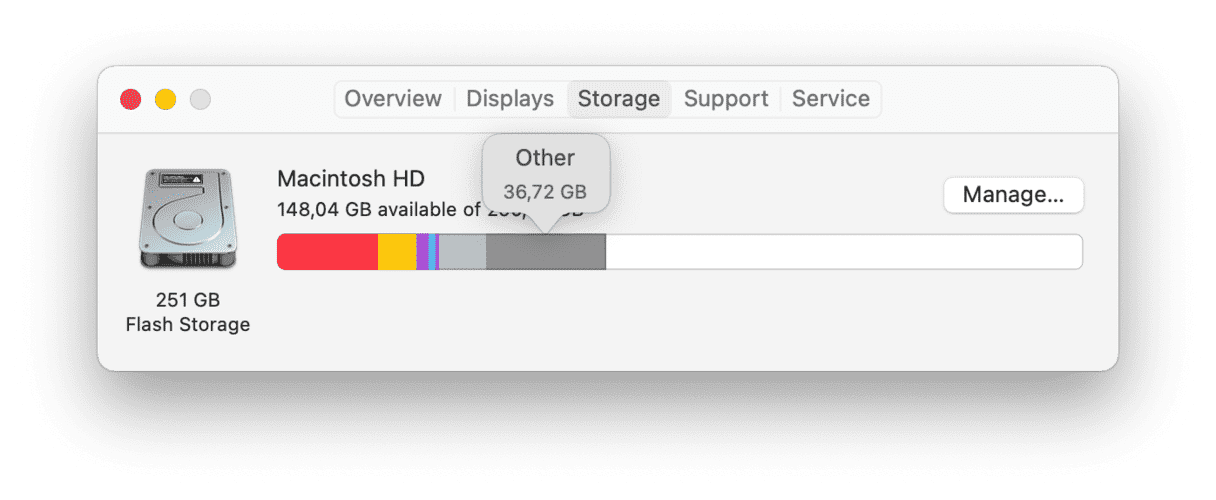
Where is Other Storage on a Mac
To show you where it is, let’s look at your Library. This is where your macOS keeps application components, widgets, and various cache archives. This part of your Mac is hidden from view for a reason. Messing up a few folders here may break your Mac. But let’s take a look:
- Open Finder > Go > Go to Folder in the top menu.
- Now paste this path:
~/Library/Caches
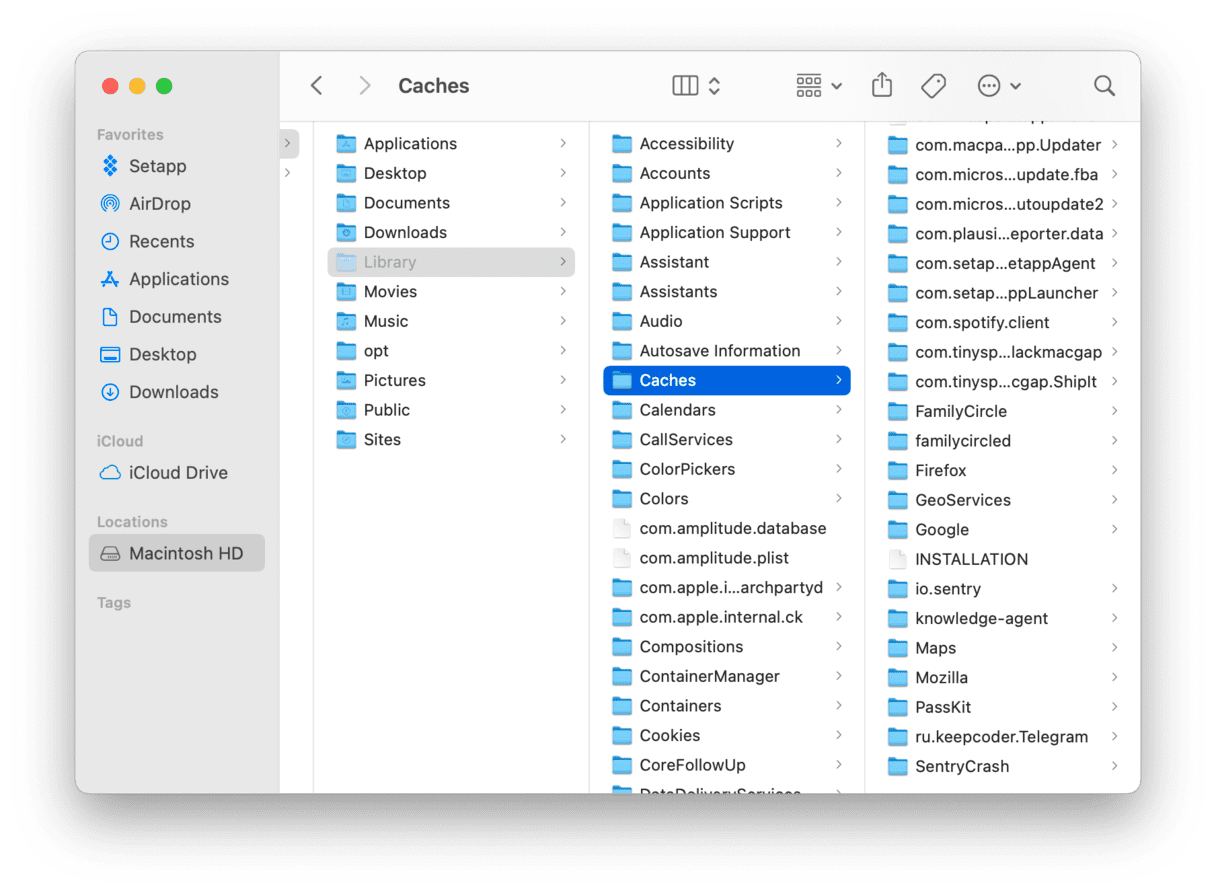
See those small folders? This is where your Other storage is. You’ve found it. Now, we’ll see what’s possible to delete.
Why it is important to clean up Other Storage
Obviously, the main reason to reduce Other Storage on Mac is to free up some space, but it is not the only one. If files from this category pile up, they may significantly slow down your Mac. Also, apps may start crashing and misbehaving. So, if you clean it up, not only will it improve the MacBook’s overall performance, but it will also remove any nuisances you may have experienced when working with applications, especially resource-heavy ones like photo and video editing software.
How to clean up Other storage on Mac
You can’t entirely get rid of Other on Mac, but you can reduce how much storage space it takes up. We’re now going to look at each of the eight types of Other files and show you how to clean up your Mac. We’re going to walk you through deleting useless documents, junk system files, system slowing cache files, old backups, and all sorts of other junk.
1. Remove large and old files
You might not think that pure text documents take up a lot of space, but you may be surprised at the size of some .pages and .csv files. And that’s before you start adding images, downloading ebooks, and creating big presentations. Soon, your Other documents can start to get out of hand.
To find and remove large and unneeded documents from Other Storage manually:
- From your desktop, press Command-F.
- Click This Mac.
- Click the first dropdown menu field and select Other.
- From the Search Attributes window, tick File Size and File Extension.
- Now, you can input different document file types (.pdf, .pages, etc.) and file sizes to find large documents.
- Review the items and then delete them as needed.

Luckily, there’s a much quicker and more thorough way. By using CleanMyMac, you are presented with a clear view of all the massive files occupying your Other space.
To locate large hidden files in all folders with CleanMyMac:
- Get your free CleanMyMac trial.
- Click My Clutter and run a quick scan.
- Click Review All Files > Large & Old Files.
- Now, review the results broken down into different categories: archives, documents, videos, etc.
- Look through your files and delete the ones you no longer need.
What’s great about this method is that you can sort the files by their size and thus free up space most effectively. CleanMyMac also locates .dmg files and archives the Other storage often comprise. These files can be moved to another folder/separate disk or could be removed securely.

Now, try it and see how it helps you slim down Other storage on your Mac. Deleting your old files alone can recover tons of space, but there are more space hoggers that fall under the Other data category.
CleanMyMac is by far one of the most efficient Mac cleaner apps, but there are other apps out there that can do similar job. To learn more about cleaning software, check out this article.
2. Clean up system and temporary files
Every second your Mac is on, the macOS creates and piles up system files — logs, for example. At some point, the system needs these files, but they quickly become outdated and just sit there, wasting your disk space. And guess what? They are in the Other Mac storage category, too.
These files are mostly temporary, but they never actually go away unless you do something about it. The difficulty is that Apple hasn’t made it easy to clear out system files. There’s a good reason for this — people often delete things they shouldn’t.
Let’s inspect your Library folder
To manually find where a majority of apps’ temporary files live, navigate to ~/Library/Application Support. In this folder, you will find your applications, and some searching will reveal a lot of space being taken up. For example, you may have gigabytes worth of old iOS backups in ~/Library/Application Support/MobileSync/Backup
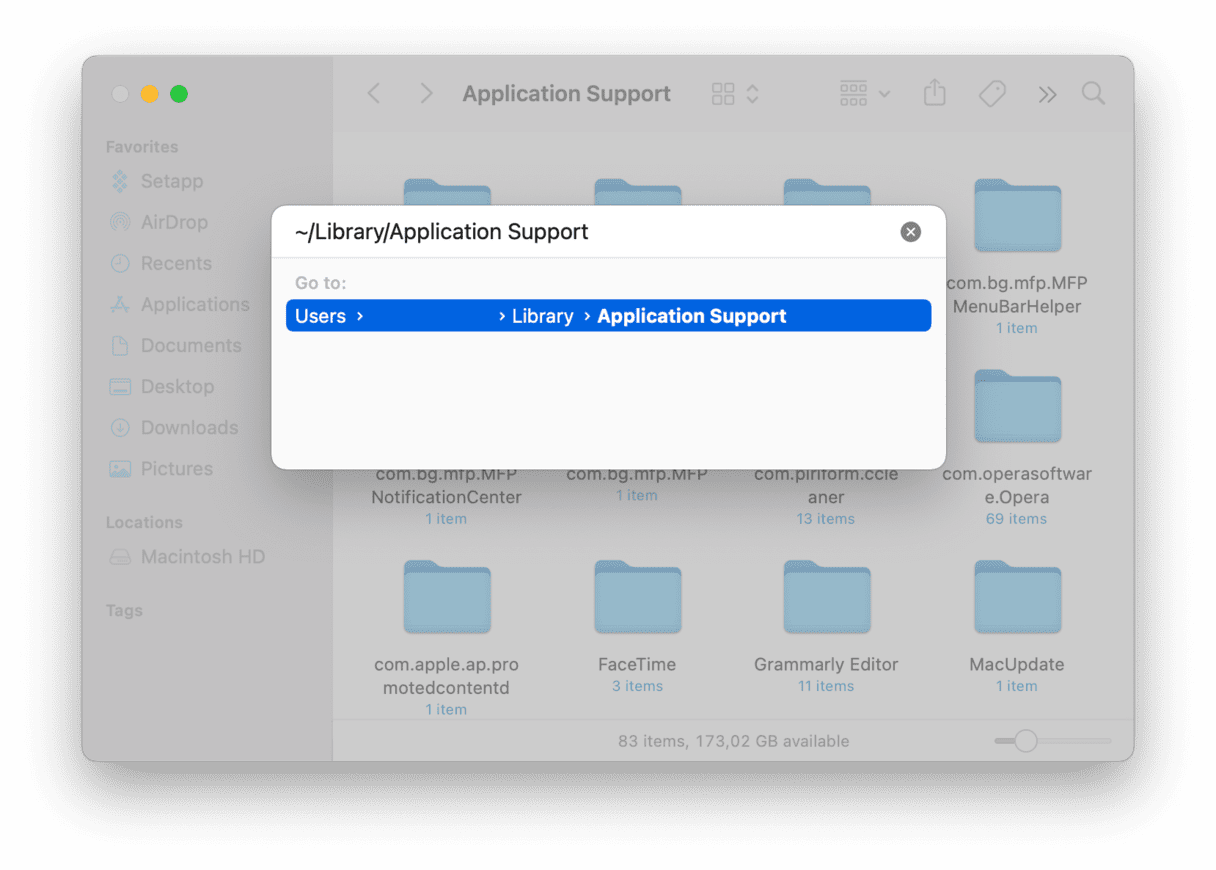
You could delete these manually, but a much safer and faster method is to use a specialist cleaning app like CleanMyMac. It has a Cleanup tool that specifically looks for useless system files and knows what’s safe to delete.
Here’s how to easily remove system files from Other Storage:
- Go to Cleanup in CleanMyMac.
- Click Scan and then Clean.
That’s pretty much it. Seriously. If this is the first time you have ever cleaned your Mac, you’ll see that the macOS Other storage tab has shrunk considerably after the system junk cleanup.

Using this method, we deleted gigabytes of junk from our MacBook.
3. Delete cache files
Cache files are not just another invisible storage hog. They are one of the worst offenders, often taking up gigabytes of precious space. The three main types of cache are browser, user, and system. Cache files are meant to help your system work faster, but they get bigger and bigger over time, eventually slowing your system down and expanding the Other category on Mac storage.
To manually clear cache files on Mac:
- Navigate to Go > Go To Folder.
- Type in
~/Library/Cachesand click Go. - Click-hold Option and drag the Caches folder to your desktop as a backup in case something goes wrong.
- Select all the files in the Caches folder.
- Drag them to the Trash.
- Empty Trash.
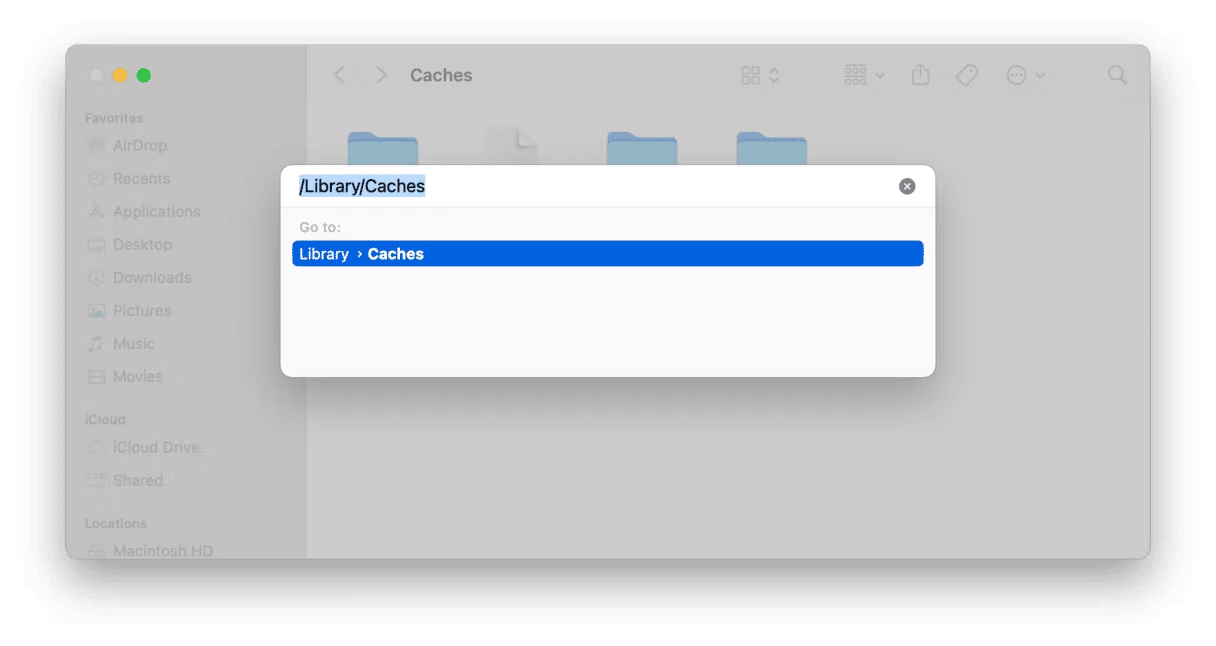
Follow the same steps for /Library/Caches (without the “~”) and ~/Library/Logs. Cache files sit in numerous folders, and with a little patience, you can clean them out manually (read more detailed instructions on clearing cache).
4. Remove Time Machine backups and snapshots
Time Machine backups and snapshots also take up significant space, so it is a good idea to get rid of them. There are two ways to remove them and thin out Other category on Mac storage, and both of them are manual.
First, connect an external hard drive you use for Time Machine backups to your Mac and choose your own way.
The first one is via the Finder:
- Open the Finder and navigate to your external disk under Locations.
- There, find the Backups.backupdb folder.
- Open this folder and choose the folder with your device if you use this external disk for backing up several Macs.
- Locate all of the backups you want to delete.
- Right-click and choose Move to Trash.

You’re done. Now, if you deleted all backups, make a new backup just in case you need to restore your data.
The second way is to use Terminal. It is for those who feel comfortable with the command line. Follow these steps with caution:
- Open Terminal via the Spotlight search or from the Applications > Utilities folder.
- Type this command:
tmutil listbackupsand press Return to see the list of all backups. - Now, select the backup you want to delete and type
sudo tmutil deletefollowed by the path to the backup and press Return — it would include [user name]/[disk name]/[YYY-MM-DD]. Repeat for all backups you want to remove.

Like with the previous steps, create a new backup, just in case.
Another way to fix it if the Mac Other storage is huge is to get rid of Time Machine local snapshots. Again, there are two ways to do it. The first one is to simply turn off automatic backups:
- Go to Apple Menu > System Preferences > Time Machine.
- Based on what you see, either deselect “Back Up Automatically” or use the Off/On switcher.

You can always turn it on later, following the same steps, but, this time, selecting “Back Up Automatically.”
The second way is to use Terminal:
- Open Terminal.
- Type:
tmutil listlocalsnapshots /(note the space before /) and press Return. - Paste
tmutil deletelocalsnapshotsfollowed by the name of the snapshot you want to delete and press Return — it would be something liketmutil deletelocalsnapshots 2022-12-16-001600, but the name of the snapshot will vary on your Mac. - Repeat it for all the snapshots you want to delete.

5. Remove app plug-ins and extensions
Another cool way to manage storage on Mac.
While apps are, unsurprisingly, categorized as Apps on the Storage bar, their add-ons are under the Other storage category. Compared to some types of files, app plug-ins and extensions probably won’t take up as much of your Mac’s Other space. Still, every bit counts. Since extensions can sometimes cause other problems on your Mac, why not remove the ones you don’t use to be safe and free up some extra Other storage space at the same time?
Tracking down all your add-ons can be a hassle. Some you’ve forgotten you had (like that nCage extension for Chrome), others you didn’t know of in the first place.
Here’s how to manually remove extensions from Chrome, Firefox, and Safari.
To remove extensions from Safari:
- Open Safari browser.
- Go to the Safari menu and click Preferences.
- Select the Extensions tab.
- Select the extension you want to remove and click “Uninstall.”
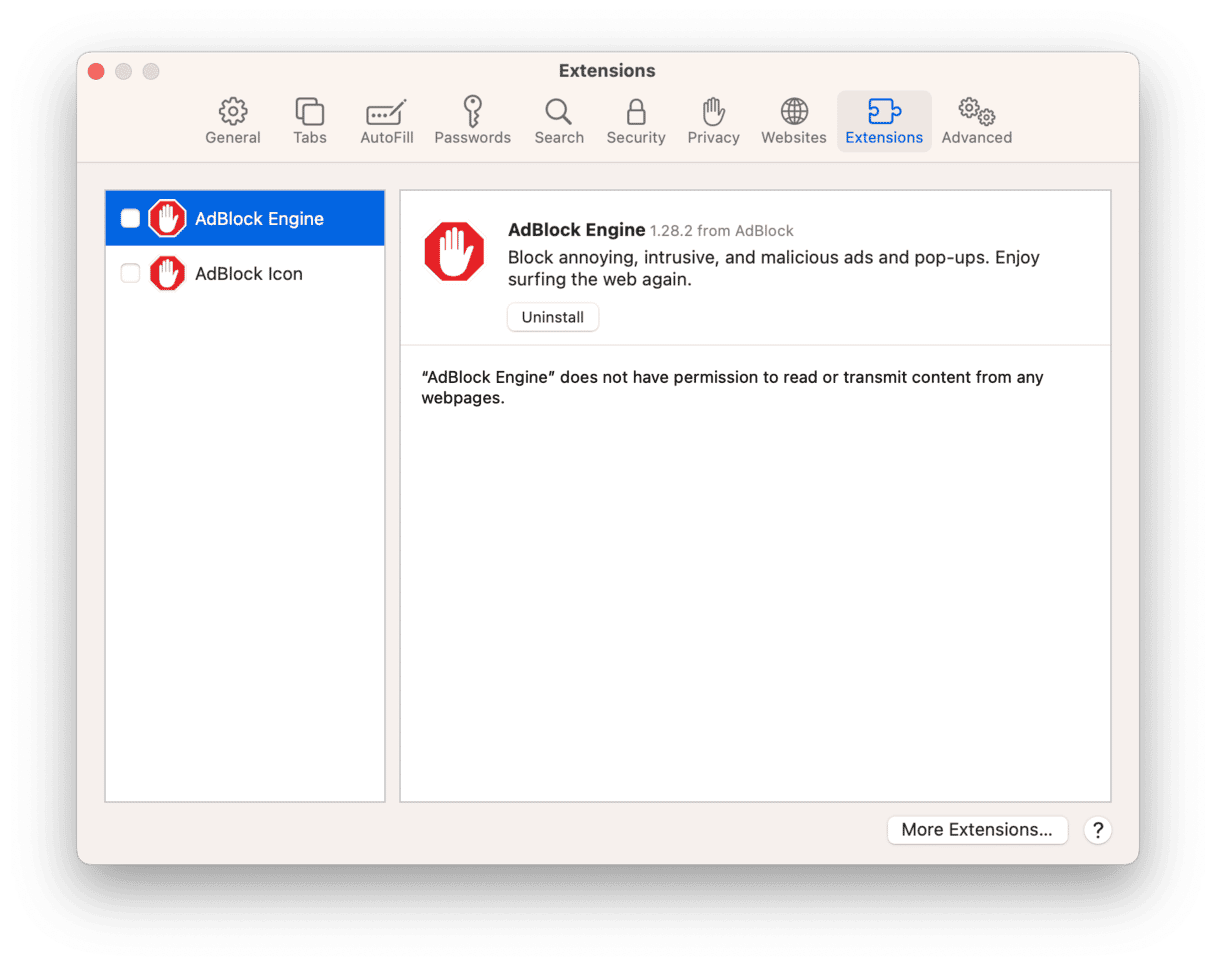
To remove extensions from Chrome browser:
- Open Chrome.
- Click the three-dot icon in the top-right corner.
- Click Extensions.
- Disable or remove as you choose.

To remove extensions from Firefox:
- Open Mozilla Firefox browser.
- Click on the burger menu in the top-right corner.
- Choose Add-ons.
- From the Extensions and Plug-ins tabs, disable and remove whatever you want.
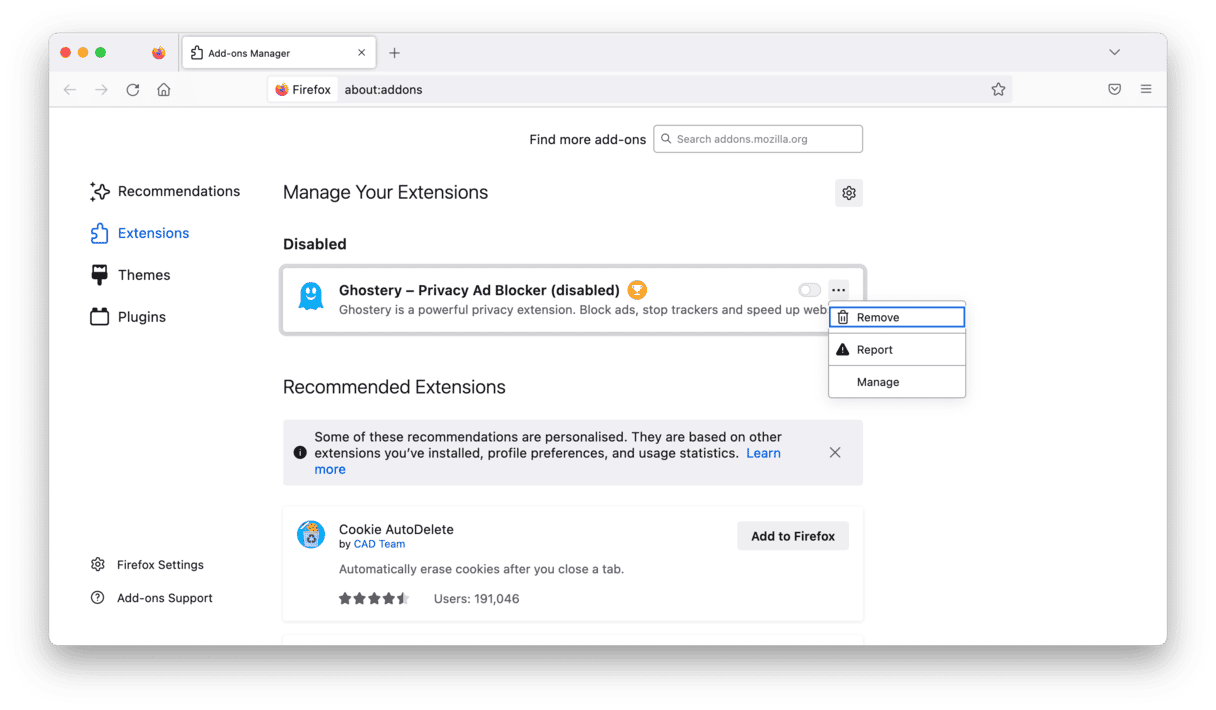
Important! If you’re not sure what a plug-in does, don’t rush to remove it. Try disabling it first and see if your apps and your system work as expected. You can always remove that add-on later.
6. Clear disk images and archives
Normally, archives and images are files you keep for a reason. However, if you think you might have accumulated some useless .zip and .dmg files on your Mac, then you should definitely clear them out as well.
You can find these files using Spotlight search:
- Open the Finder.
- Type dmg/zip in the search field.
- Select Search: This Mac.
- Sort the results by Size.
The Finder will show you all files of the format you’ve specified sorted by size. You can clean out those you don’t need.
To safely and easily remove all your old unused disk images, CleanMyMac has a dedicated feature within the Applications tool. Everything is categorized, so you have a better understanding of what you’re removing.
- Go to the Applications in CleanMyMac.
- Click Scan, and when it’s done, click Manage My Applications > Leftovers.
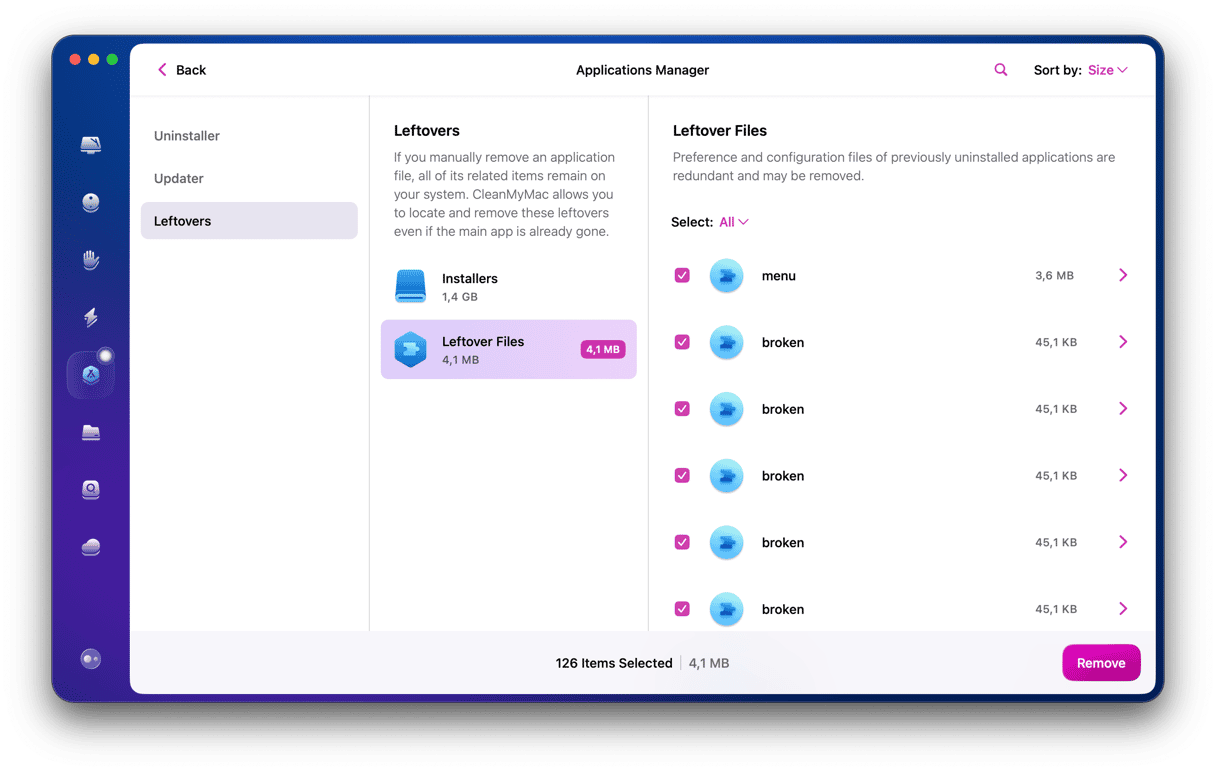
Now, you will see Installers. These are .dmg files you may no longer need. Select anything you want to get rid of and click Remove.
7. Remove application logs and support files
Apps on your Mac generate and store lots of files, which are mainly logs and support files. After you delete the application, those files lay still on your hard drive occupying space and doing nothing. So, it’s a good idea to remove those.
- Open Finder.
- Press Command-Shift-G and go to
~/Library/Application Support
Look for the folders that have the same name as the app you’ve deleted. You can safely move those to Trash.
Then, go to the following locations to delete other app-related files:
~/Library/Logs~/Library/Containers
Also, check the following locations to get rid of any app leftovers and fix it when Mac Other storage is huge:
/Library/Caches/~/Library/Caches~/Library/Internet Plug-Ins/~/Library/Preferences/~/Library/Saved Application State/~/Library/Application Support/CrashReporter/
8. Get rid of everything else from Other disk space
Even Other storage space has its own other files, and no, the irony of that statement is not lost on us.
Other storage on Mac can also include:
- Files in your user library (screen savers, for example).
- Files Spotlight search doesn’t recognize.
Typically, they won’t be as big of a share of Other data on your Mac as cache files and other items we’ve cleared out. However, if you’re determined to clean out as much Other Mac storage as possible, here’s how you can delete screensavers:
- Open Finder.
- In the Menu bar, select Go > Go to Folder.
- Type this:
/System/Library/Screen Savers/and click Go.
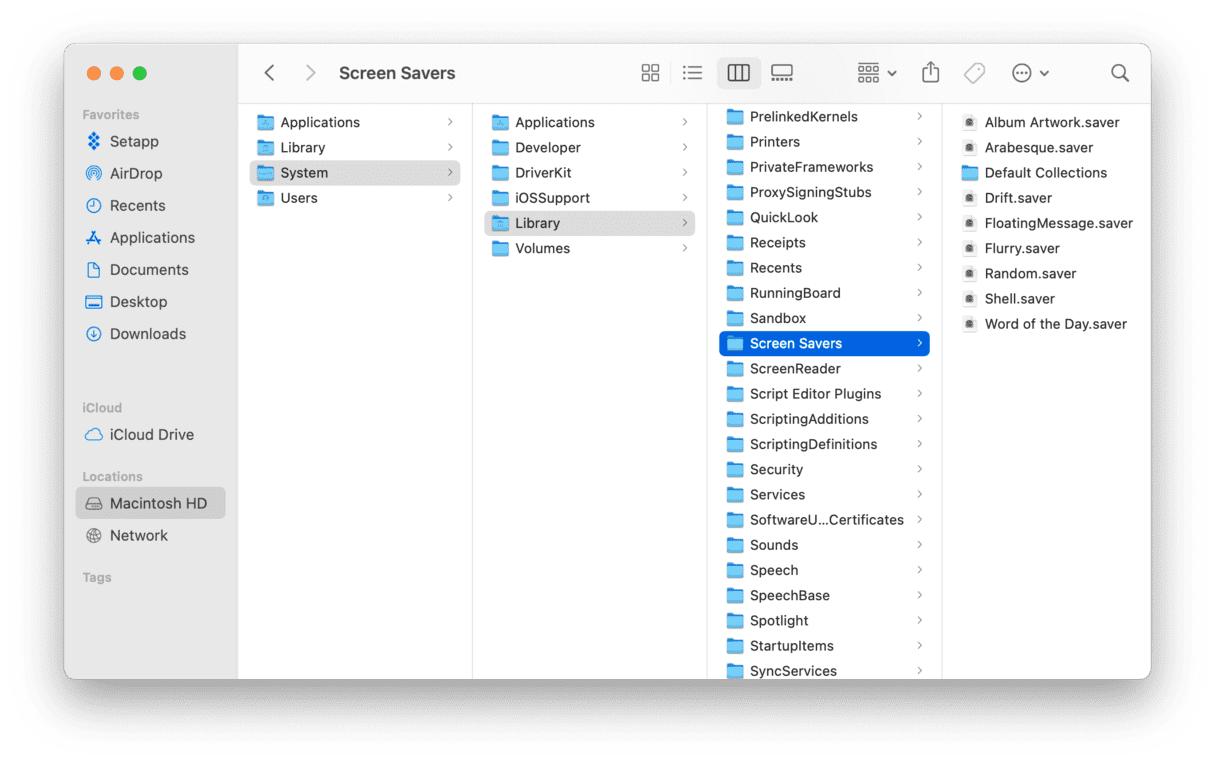
You’ll see the screen saver files now — they are lightweight, but for the sake of being thorough, you can trash them as well.
As for files Spotlight doesn’t recognize, they are rare. They could include files like Windows Boot Camp partitions or virtual machine hard drives. If you don’t recall putting anything like that on your Mac, you probably have nothing to look for.
9. Remove unneeded downloads
One more place to look for “Other” files would be the downloads folder. Not all of these files necessarily add to Other storage, but they are space hoggers, so removing them is recommended. First of all, find and delete unused disk images and archives. If you have followed our steps, you should have removed them already, but double-checking is always a good idea. Then, send to trash anything else you no longer need. To make the process easier, filter your files by Kind and then by size. Don’t forget to empty the trash.
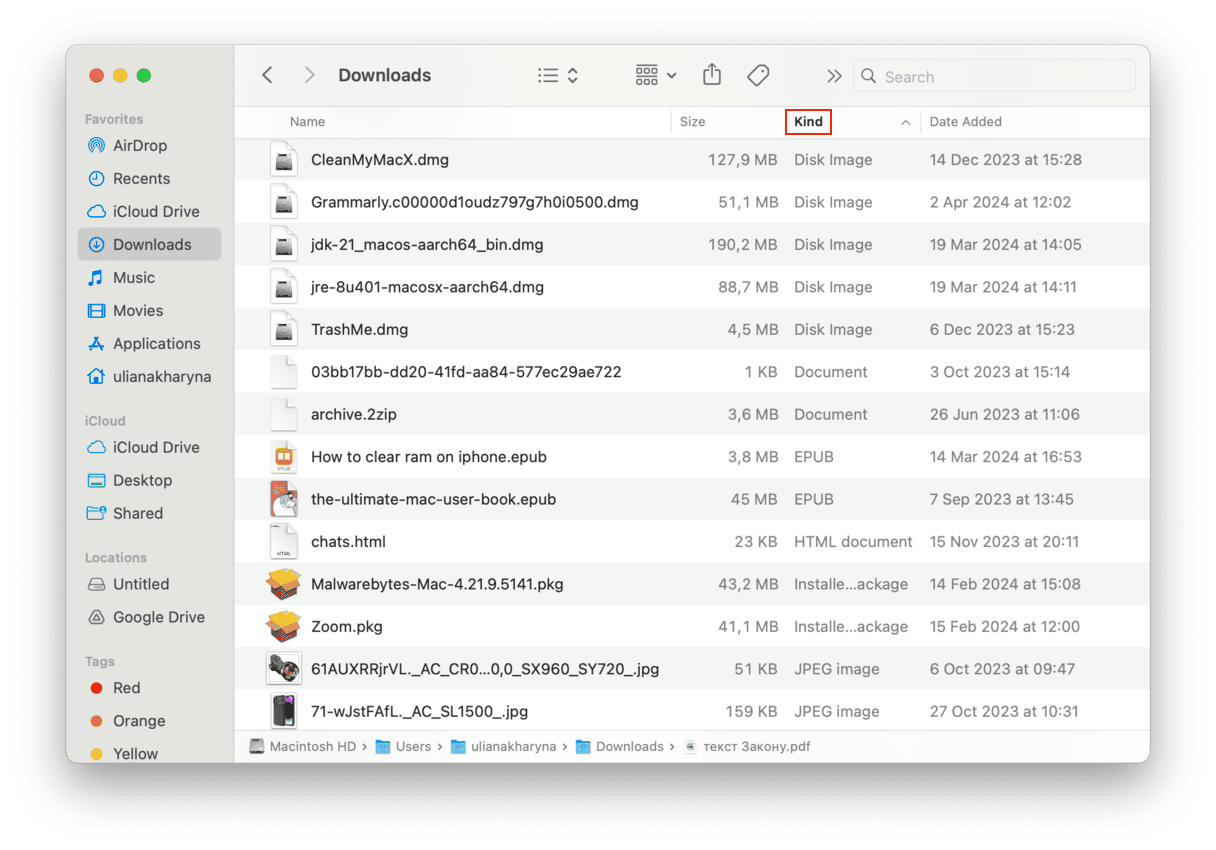
And it’s done! Hopefully, you managed to free up some GBs in the Other storage section.
How to prevent Other Storage from piling up
You’ll never remove the Other Storage section from Mac entirely, nor should you want to. It’s perfectly fine to have space taken up by necessary files, whatever category label they have. What is not okay is valuable storage space being wasted. So, take some time to maintain your Mac and carry out regular cleanups. You can follow the steps above from time to time to get rid of unnecessary stuff.
Or you can use CleanMyMac and its Smart Care tool to do all the hard lifting for you. It will scan your Mac, looking for junk files, and, at the same time, recommend maintenance tasks, remove any malware that may have remained unnoticed, and install critical app updates. All you have to do is click Scan > Run.

If you want to carry out maintenance manually, it is also possible — check out this article with all the steps you might need to take.
FAQ
Why is my Other storage so high on Mac?
Other contains various files, from temporary files and document versions to caches and old backups — that’s why it may be bigger in size than other storage categories. App leftover data can be one of the reasons Other storage stays the same even when you delete apps.
Is it safe to delete Other on a Mac?
It is safe as long as you’re careful with what you delete. Most of the files that usually comprise Other storage are safe to remove: these are unneeded archives and .dmg files left after the installations, old iOS and iPadOS backups, PDFs and screenshots.
How can I stop it getting so large in the future?
Social media apps often store audio and video files that may get your Other storage growing. Control the amount of data they cache or reinstall those apps occasionally to clear up Other.






